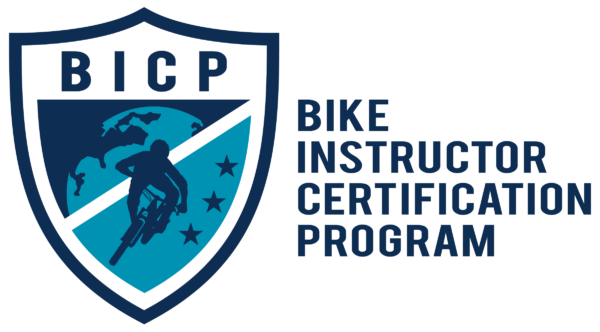Level 1 Prerequisites:
- BICP Ride Leader Certification. (Included in the price of Level 1)
- Current First Aid & CPR certificate.
- Wilderness First Aid certification is strongly recommended.
- Three or more years of mountain bike experience.
- Volunteer work or work experience in the bike-related industry.
- At least 16 yrs. Old.
- Good communication skills.
- A strong desire to help others have more fun and progress safely.
- Ability to perform basic trailside repairs (flat tires, broken chains, and shift adjustments).
- Fluent in the English language, including reading and speaking.
You will be tested on the following:
- Fundamental Elements
- Skill Description
- Demonstrations
- Group Management
- Error Detection and Corrections
- Progressions
- Communication
- Leadership & Professional Conduct
The BICP uses the Minimum Ride Standard when testing for Certification.
The BICP Certification courses are skills teaching courses, not skills learning courses.
Therefore, the participants attending the in-person certification course should be well-versed in the skills mentioned below and must be able to perform them at or above the BICP Ride Standard. The successful demonstration of these skills during the course is a prerequisite for certification. It is, therefore, mandatory for the participants to be proficient in these skills before attending the course. It is mandatory to demonstrate these skills successfully to achieve certification during the course.
Being able to perform the skill = Proficient at the skill.
Being able to teach the skill = Mastering the skill.
Please contact the BICP for information on a skills prep course if you need help meeting these ride standards.
BICP LEVEL ONE SKILLS DEMONSTRATIONS
Neutral and Ready Position – Move smoothly between standing Neutral to a Low Ready using all Ten Fundamentals. Foot Wedge “Heavy Feet-Light Hands”.
Bike/Body Separation Forward and Back – Slide the body forward and slide the body back while maintaining a level plane.
Bike/Body Separation Side to Side – Lean the bike from one side to the other side while maintaining a balanced Ready position, using all Ten Fundamentals.
Braking – Apply both brakes for a controlled and complete stop from a range of speeds, using all Ten Fundamentals.
Shifting – Perform seamless/silent up-shifts and down-shifts during a gentle climb.
Ratcheting – In a Tall Ready position, perform multiple ratcheting pedal strokes, while staying balanced. Minimum of 1 bike length.
Riding Straight Lines – Ride an elevated feature 6 inches (15 cm) off the ground.
Small Circles – Ride a small 8 ft (2.4 m) circle, using all Ten Fundamentals.
Switchbacks – Ride a section of switchbacks of varying grades – in both directions.
Climbing – Seated – Standing – Crouched – Proper use of bike body movements while maintaining a balanced position and traction on both wheels.
Restarting on a Climb – Restarting on technical terrains, such as loose dirt, on slopes of varying grades of difficulty.
Dismounts – Climbing and Descending – Dismounting the bike on technical terrains, such as loose dirt, on slopes of varying grades of difficulty.
Braking on Descents – Come to a complete stop, on a downhill slope of varying grades of difficulty, then continue pedaling.
Descending – Ride a small technical trail (Blue Trail) while maintaining stability and control.
Rock Dodge – Dodge a set of four cones in a square formation 12 ft (3.6 m) apart – in both directions.
Cornering – Maintain a balanced position while leaning the bike through a 90-degree corner, at a moderate speed – in both directions.
Roll Down – Roll Down Lunge – Roll Down a 12-inch (30 cm) feature, while keeping both wheels in contact with the ground.
Front Wheel Lift – Perform a Front Wheel Lift over a 4-inch (10 cm) high obstacle.
Rear Wheel Lift – Perform a Front Wheel Lift then Rear Wheel lift over a 4-inch (10 cm) high obstacle.
